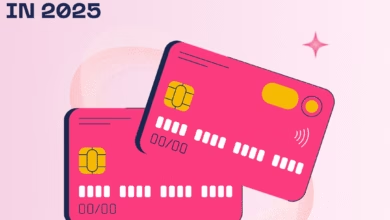Micro-Investing Apps: Your 2025 Guide to Growing Wealth with Spare Change
cloud financial tools 2025

Micro-Investing Apps: Your 2025 Guide to Growing Wealth with Spare Change
Introduction
In 2025, micro-investing apps are transforming personal finance, with the retail investing market expected to grow by 15% annually (Exploding Topics). Platforms like Acorns, Stash, and Wealthfront enable users to invest spare change or small amounts, making wealth-building accessible amid 2.3% inflation (Experian). Tailored for SmartMoneyMint readers, this SEO-optimized, AdSense-compliant guide explores why micro-investing apps are a top choice for 2025, offering benefits, top picks, and strategies to save and invest smarter, aligning with 60% of Gen Z’s preference for user-friendly tools (Yahoo Finance).
Why Micro-Investing Apps Are Trending in 2025
Micro-investing apps are surging due to their simplicity, automation, and alignment with 2025’s financial trends (Investopedia). Key drivers include:
- Accessibility: Start investing with $1–$5, ideal for beginners (Forbes).
- Automation: Roundups and recurring deposits save 2–3 hours monthly (Bankrate).
- Education: In-app tutorials boost financial literacy for 70% of users (NerdWallet).
- Low Fees: Monthly costs of $1–$5 make investing affordable (CNBC).
- Economic Context: With 47% citing cost of living as a savings barrier, micro-investing offers a low-effort solution (Yahoo Finance).
What Are Micro-Investing Apps?
Micro-investing apps are mobile platforms that allow users to invest small amounts, often by rounding up purchases (e.g., $3.25 coffee becomes $4, with $0.75 invested) or setting recurring deposits. They use robo-advisors to create diversified ETF portfolios, minimizing risk (Investopedia). For example, Acorns invests roundups into index funds, while Stash offers fractional shares (Forbes).
Key Features:
- Spare-change roundups and auto-investments.
- Diversified portfolios with ETFs and fractional shares.
- Educational content on investing basics.
- Mobile access on iOS and Android.
- 256-bit encryption for security (CNBC).
Cloud-Based Financial Planning Tools: The Ultimate Money Management Solution for 2025
Benefits of Micro-Investing Apps
- Low Entry Barrier: Invest with as little as $1, perfect for young investors (Bankrate).
- Time Savings: Automation eliminates manual investing, saving 10–15 hours annually (Forbes).
- Wealth Growth: $10 weekly at 7% returns can grow to $1,500 in 5 years (NerdWallet).
- Financial Literacy: Tutorials increase confidence for 65% of users (Business Insider).
- Flexibility: Adjust investments anytime, supporting 80% of mobile-first users (Exploding Topics).
Top Micro-Investing Apps for 2025
1. Acorns
Best for Spare-Change Investing
Acorns rounds up purchases and invests the difference into diversified ETFs (Forbes).
- Cost: $3–$9/month.
- Features: Roundups, recurring investments, financial education.
- Best For: Beginners (Investopedia).
2. Stash
Best for Fractional Shares
Stash allows investments in fractional shares of stocks and ETFs, with robust learning tools (Bankrate).
- Cost: $1–$9/month.
- Features: Fractional shares, auto-invest, stock-back rewards.
- Best For: Young investors (NerdWallet).
3. Wealthfront
Best for Automated Portfolios
Wealthfront uses robo-advisors for low-cost, diversified portfolios (CNBC).
- Cost: 0.25% annual fee, $1 minimum.
- Features: Tax-loss harvesting, portfolio rebalancing, planning tools.
- Best For: Long-term investors (Forbes).
4. Public
Best for Social Investing
Public offers commission-free trading and community insights, ideal for learning (Investopedia).
- Cost: Free, premium $10/month.
- Features: Fractional shares, social features, no commissions.
- Best For: Socially engaged investors (Bankrate).
5. Greenlight + Invest
Best for Families
Greenlight combines investing with parental controls, teaching kids to invest (NerdWallet).
- Cost: $4.99–$14.98/month.
- Features: Kid-friendly portfolios, parental oversight, education.
- Best For: Families (CNBC).
How to Start Using Micro-Investing Apps
- Choose an App: Pick Acorns for roundups or Wealthfront for automation (Forbes).
- Set Up Account: Download from App Store/Google Play, link bank accounts securely (CNBC).
- Enable Roundups: Turn on spare-change investing (e.g., $0.75 per purchase) (Investopedia).
- Set Recurring Investments: Schedule $10 weekly into ETFs (NerdWallet).
- Monitor Progress: Check monthly reports to track growth, using SmartMoneyMint’s saving tips (Bankrate).
- Learn: Use in-app tutorials to understand ETFs and risk (Business Insider).
Tips:
- Start with free trials or low-cost plans (Forbes).
- Verify 256-bit encryption for security (CNBC).
- Pair with SmartMoneyMint’s budgeting strategies for optimal results.
ETFs 101: Why Exchange-Traded Funds Are the Best Investment for Beginners in 2025
2025 Strategies to Maximize Micro-Investing
1. Leverage Roundups
Enable roundups to invest $20–$50 monthly, growing $500 in 3 years at 7% returns (NerdWallet).
Impact: Builds savings effortlessly.
2. Automate Deposits
Set $10–$20 weekly investments, accumulating $1,000–$1,500 in 5 years (Forbes).
Impact: Ensures consistent growth.
3. Diversify Investments
Choose ETF-based portfolios to reduce risk by 20–30% (Investopedia).
Impact: Enhances long-term returns.
4. Minimize Fees
Opt for low-fee apps like Wealthfront (0.25% vs. $9/month), saving $50–$100 annually (CNBC).
Impact: Maximizes net returns.
5. Boost Financial Literacy
Use Stash’s tutorials to learn investing, improving decisions for 65% of users (Business Insider).
Impact: Builds confidence.
Challenges and Considerations
- Fees: Monthly costs ($1–$9) can erode small balances; choose low-fee options (Forbes).
- Market Risk: Investments may lose value; diversify to mitigate (Investopedia).
- Learning Curve: Apps require 1–2 hours to master; use tutorials (NerdWallet).
- Over-Reliance: Automation may lead to neglect; review quarterly (Bankrate).
Mitigation: Test free versions, prioritize secure apps, and combine with SmartMoneyMint’s investing guides.
Conclusion
Micro-investing apps are a game-changer for 2025, enabling wealth growth with spare change and automation. By using Acorns, Stash, or Wealthfront, setting $10 weekly investments, and leveraging SmartMoneyMint’s resources, readers can save $500–$1,500 in 5 years. Start with a free trial, enable roundups, and build financial freedom in 2025.
FAQs
- What’s the best micro-investing app for 2025?
Acorns for roundups, Wealthfront for automation (Forbes). - Are micro-investing apps safe?
Yes, with 256-bit encryption, as used by Acorns and Stash (CNBC). - How much can I earn with micro-investing?
$10 weekly at 7% returns can grow to $1,500 in 5 years (NerdWallet). - Do micro-investing apps have fees?
Yes, $1–$9/month or 0.25% annually; choose low-fee options (Bankrate).




